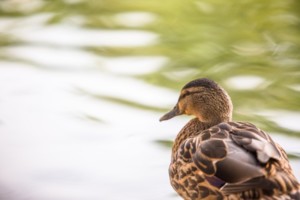French Lop Rabbit
Oryctolagus cuniculus
Description
The French Lop is a large domestic rabbit with a wide head and ears that hang to about an inch below the jaw line. French Lops have muscular bodies and come in a wide variety of colors including light brown, black, chocolate brown, and red.
Size
This is the largest of the lop-eared breeds. French Lops are very heavy, weighing 10-14 pounds.
Adaptations
As prey animals, rabbits have many adaptations that help them survive.
- Their strong back legs give them the speed necessary to flee from predators.
- Rabbits’ feet contain long claws for traction and have fur on the bottom for warmth.
- Rabbits’ eyes are positioned on the sides of their heads in order to see danger approaching from any direction.
Diet
Belle is fed rabbit pellets, vegetables, dark greens, and timothy hay.
Reproduction
When a rabbit is pregnant it is said to be “in kindle.” The gestation period lasts 31 days. The female (doe) gives birth to a litter of baby rabbits (called kits or kittens), which are totally blind and hairless until they are 10 days of age. The typical litter size is 6 or 7 but can be as high as 12 kits. The young rabbits are weaned at 4 weeks of age. A doe can have as many as five litters per year.
Shelter and space needs
In the warmer months, Belle spends the days in a grassy yard, coming indoors to the rabbit and chicken building at night or in bad weather. Belle is provided with plenty of chewing material to help wear down her fast-growing teeth.
Life expectancy
Domestic rabbits live between 5 and 15 years, with an average life expectancy of 8 years.
Relationship with man
French Lops are generally used for pets due to their good temperaments. However, because of their large size, French Lops can be difficult for young children to handle. Rabbits can also be raised for meat and fur.
Fun Facts
- Rabbits have two rows of upper incisors (the large teeth in the front of the mouth). The teeth in the second row are called the peg teeth. These teeth are slightly smaller than the front incisors and lie directly behind them.
- The teeth of a rabbit keep growing for its entire life! Because of this, rabbits need to be given constant access to chewing material to keep their teeth worn down.
- Rabbits can be trained to use a litter box.
- The tail of a rabbit has a special name. It’s called a scut. (sounds like “scoot”.)






